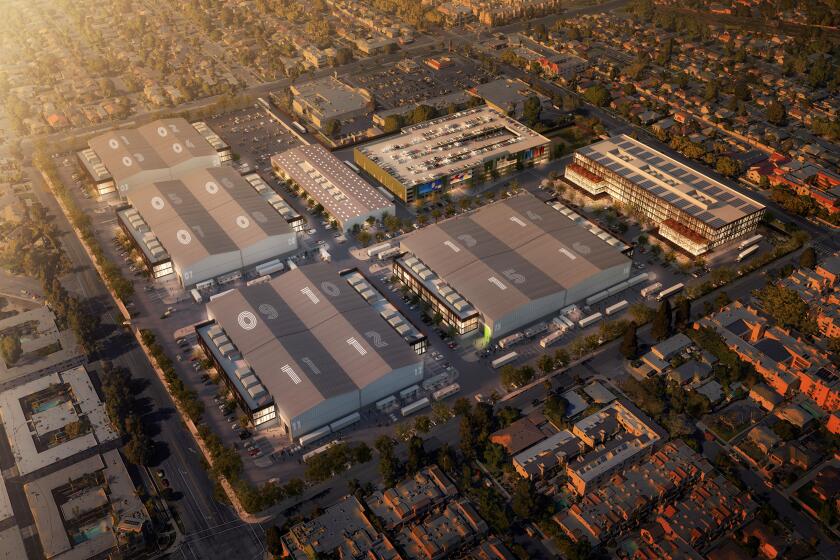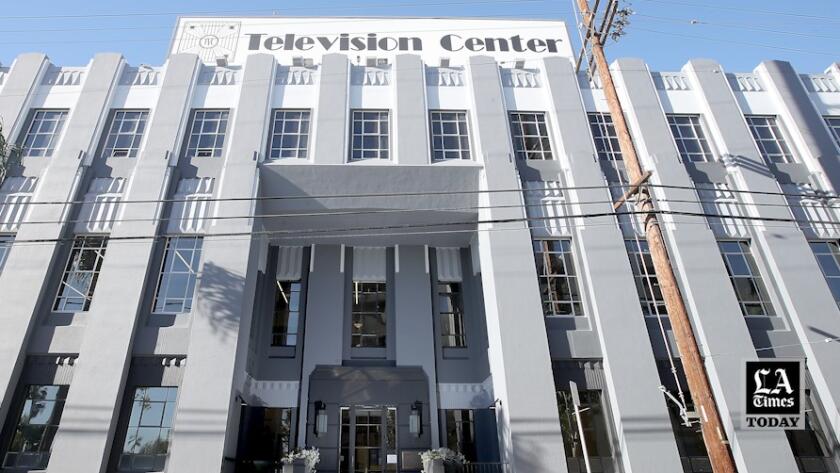Expansion set for old Hollywood studio amid surging demand for L.A. soundstages
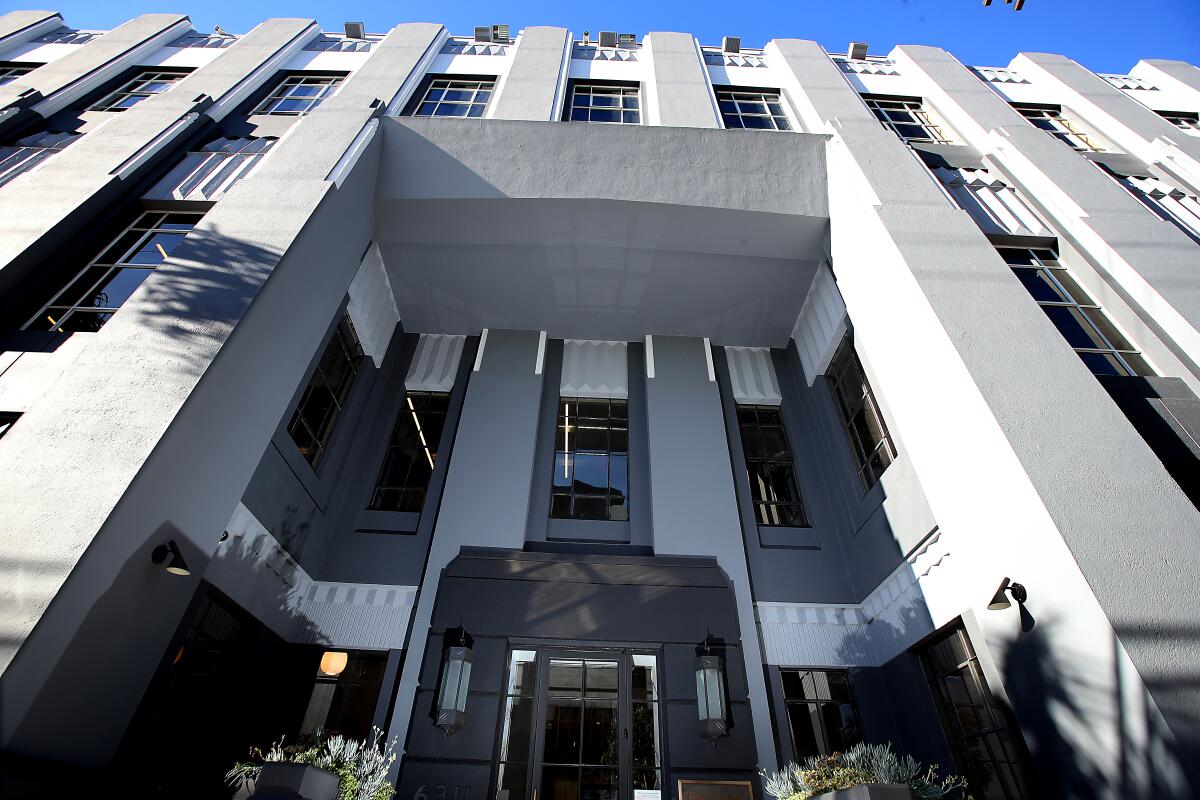
- Share via
A historic Hollywood studio site where such stars as Rudolph Valentino and Lillian Gish made silent films is poised for a $600-million comeback in the new era of streaming entertainment.
The owner of Television Center, once home to Technicolor’s filmmaking laboratory and Metro Pictures Corp., plans to turn the dated complex on Romaine Street into a bigger, more modern studio that will rent production facilities to people who make movies and television shows.
Spurred by the intensifying competition between streaming platforms such as Netflix and Apple TV+, television production is the top driver of demand for both on-location and stage-based production.
In the ring of L.A.’s famed Thirty Mile Zone of filming territory, developers are upgrading old studios such as Warner Bros. Ranch in Burbank and Universal Studios and inventing whole new ones, including one on the property of the former Sears store in Hollywood and one planned in the Los Angeles Times’ printing plant downtown.
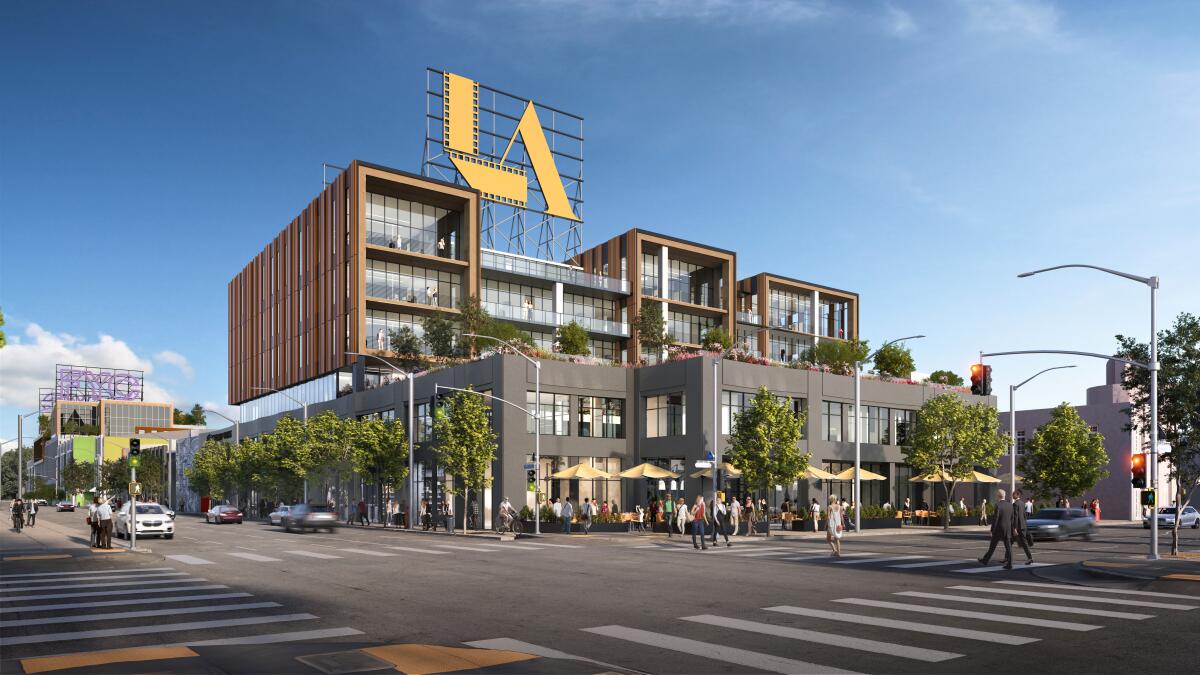
The surge in demand is a welcome development as city and state leaders have been trying for years to lure filmmakers back from competing states and countries with various financial incentives. State legislators authorized an additional $150 million in tax credits last year for filming on new or renovated soundstages.
Growth in streaming television has recharged the region’s illustrious entertainment industry, USC economist Richard Green said.
“It’s what makes L.A. special and what’s made L.A. special for 100 years,” he said. “New studios are a reflection of how important this business is to the economy.”
Existing soundstages in Los Angeles County have been almost fully rented for years, which can make it hard for new productions to find places to work, according to FilmLA, the nonprofit that handles film permits in the region.
“We’ve seen streaming growing at an average rate of 35% a year,” FilmLA President Paul Audley said last month. “Even if that backs off, which some people are now predicting, we still don’t have enough stage space to deal with that.”
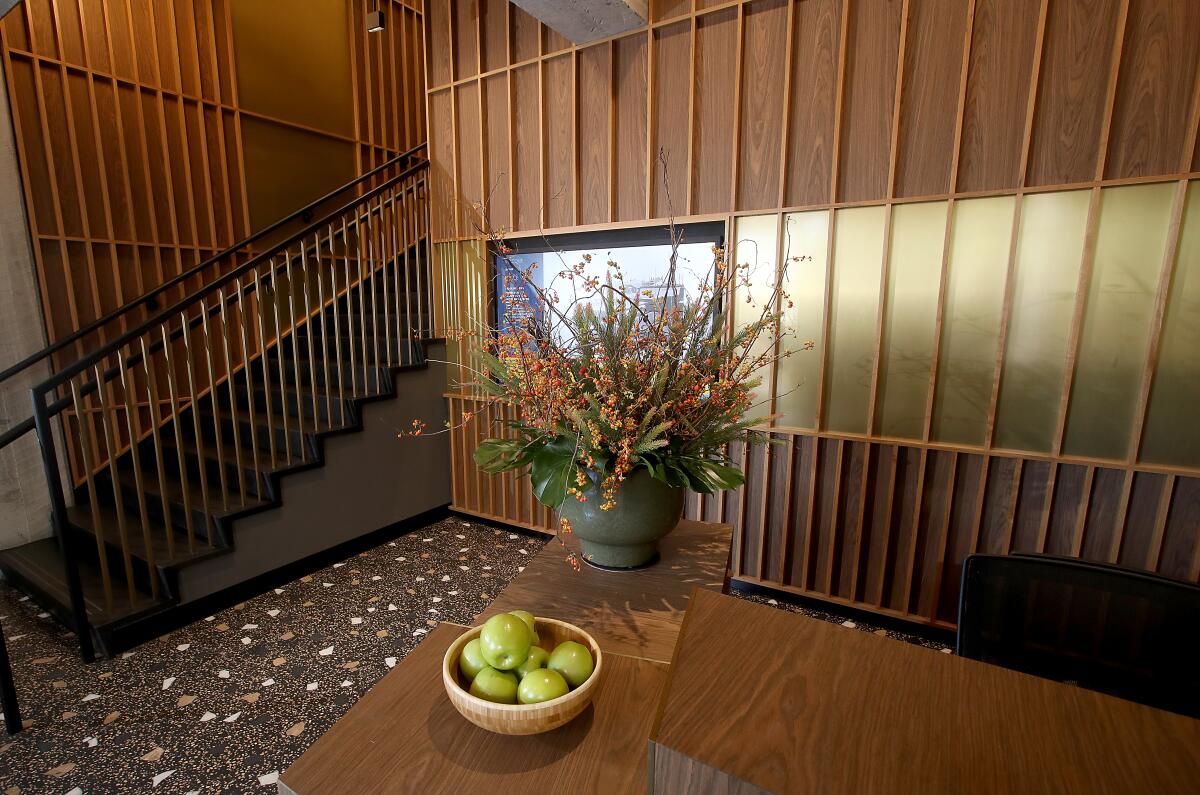
Though the Los Angeles area has the largest number of soundstages of any city in the world, studios are operating near 100% capacity with wait lists as long as five film productions deep for those spaces, financial advisor Deloitte said in a report last year.
“To meet the booming demand, supply would need to more than double in Los Angeles County” in the next few years, Deloitte said. Planned projects for more studio space fall far short of that.
Entertainment real estate developer Bardas Investment Group will submit plans to the city Thursday to transform Television Center in the heart of Hollywood by adding four soundstages and other production facilities, Managing Principal David Simon said.
The goal is to create a 620,000-square-foot studio on two city blocks with updated elements of a classic Hollywood film factory supported by fashionable offices for people in the industry and underground parking for more than 1,000 cars.
“It’s intended for all entertainment media users,” Simon said of the studio. “We want to keep Hollywood in Hollywood.”
Bardas and financial partner Bain Capital Real Estate made a big bet on reviving the old studio compound, paying $135 million for Television Center in March, more than twice what the previous owner paid in 2020.

The expense is justified by the chance to make in Hollywood proper the kind of studio-office complex that entertainment creators are pursuing, Simon said.
“Hollywood is the best brand in the entire world in respect to the entertainment industry,” he said. “We feel good about the total $600-million investment in the project.”
Bardas previously announced another studio in the works on the site of a long-closed Sears store and parking lot on Santa Monica Boulevard west of the 101 Freeway in Hollywood. Plans there call for a studio with five soundstages and support facilities including offices and space for production base camps, where trucks, equipment and actors’ trailers are placed.
That project, called Echelon Studios, is in the city approval process, which Simon hopes to complete in time to break ground next spring. At Television Center, which will be renamed Echelon at Television Center, Simon hopes to start work within 18 months. Construction of each studio would take about two years to complete.
The COVID-19 pandemic had little impact on the space crunch for production in Los Angeles.
At Television Center, Simon plans to “pull together” the two blocks “in a way that it will feel like one large studio complex.”
On the north block, the former Technicolor facility was built between 1930 and 1966, and has about 183,000 square feet of office and studio space, including one small soundstage. Bardas plans to retain the property’s original Art Deco-style structures while adding a six-story office building with outdoor terraces facing the Hollywood Hills.
Technicolor used the older buildings for offices and its processing lab, which turned out such films as “Snow White and the Seven Dwarfs,” “The Wizard of Oz” and “Singin’ in the Rain.”
After Technicolor moved in the 1980s, the complex was dubbed Television Center, Simon said.
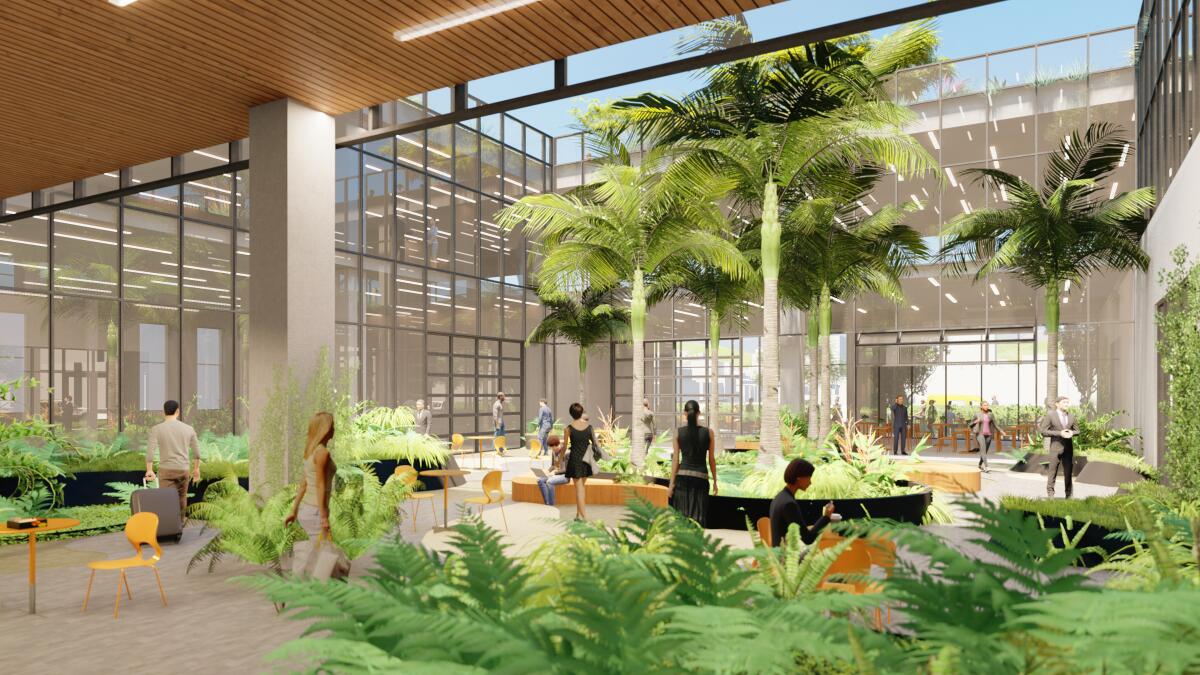
Offices serving the entertainment business are a key element in new studio development because they are in high demand. Film and television production are one of the biggest occupiers of office space in the Los Angeles region, leasing 17.7 million square feet as of 2020, real estate brokerage CBRE said.
The north block would also have a street-level restaurant and coffee shop serving the public, Simon said. The rest of Echelon at Television Center would be internally secured like other studio lots.
The block south of Romaine was once the lot of Metro Pictures, which became part of Metro-Goldwyn-Mayer in the 1920s. Among Metro’s stars were Rudolph Valentino, Lillian Gish, Ramon Novarro, Jackie Coogan, Buster Keaton and Wallace Beery.
Plans for the south block, where there’s a parking lot, call for four large soundstages, a base camp and a six-story office structure.
With soundstages in short supply and production on the rise, a developer plans to build a new studio in Hollywood.
Other studio projects abound around Los Angeles County.
Last month East End Studios submitted an application to the city to build a studio near the newly famous 6th Street bridge in downtown L.A. With 16 soundstages, East End Studios’ ADLA Campus would be one of the larger studio projects in the pipeline for the county.
A potential downtown competitor is 8th & Alameda Studios on the site of the current Times printing plant. That planned project would eventually have 17 soundstages on 26 acres.
Other substantial developments include the redevelopment of Warner Bros. Ranch in Burbank and a seven-soundstage complex called Sunset Glenoaks Studios in the Sun Valley neighborhood of L.A.
FilmLA is tracking 14 studio projects in Greater Los Angeles, including new stages and other facilities at the Universal Studios lot and a $1.25-billion overhaul of the former CBS Television City.
If all of these projects are built, the count of certified stages in the region would increase by about 27%, FilmLA said, and the total square footage of stages would grow “by an unknown but considerable sum.” Los Angeles County has 5.4 million square feet of certified stage space in 398 stages.
Adding more facilities to make movies and TV shows cements L.A.’s appeal as the home of the entertainment industry, Green said.
“If you want to get into this business, you want to be where there is dense production,” he said, which “creates a constant recycling between the talent and the work that needs to be done. It’s hard to break that up.”
- Share via
Watch L.A. Times Today at 7 p.m. on Spectrum News 1 on Channel 1 or live stream on the Spectrum News App. Palos Verdes Peninsula and Orange County viewers can watch on Cox Systems on channel 99.
More to Read
Sign up for Essential California
The most important California stories and recommendations in your inbox every morning.
You may occasionally receive promotional content from the Los Angeles Times.
